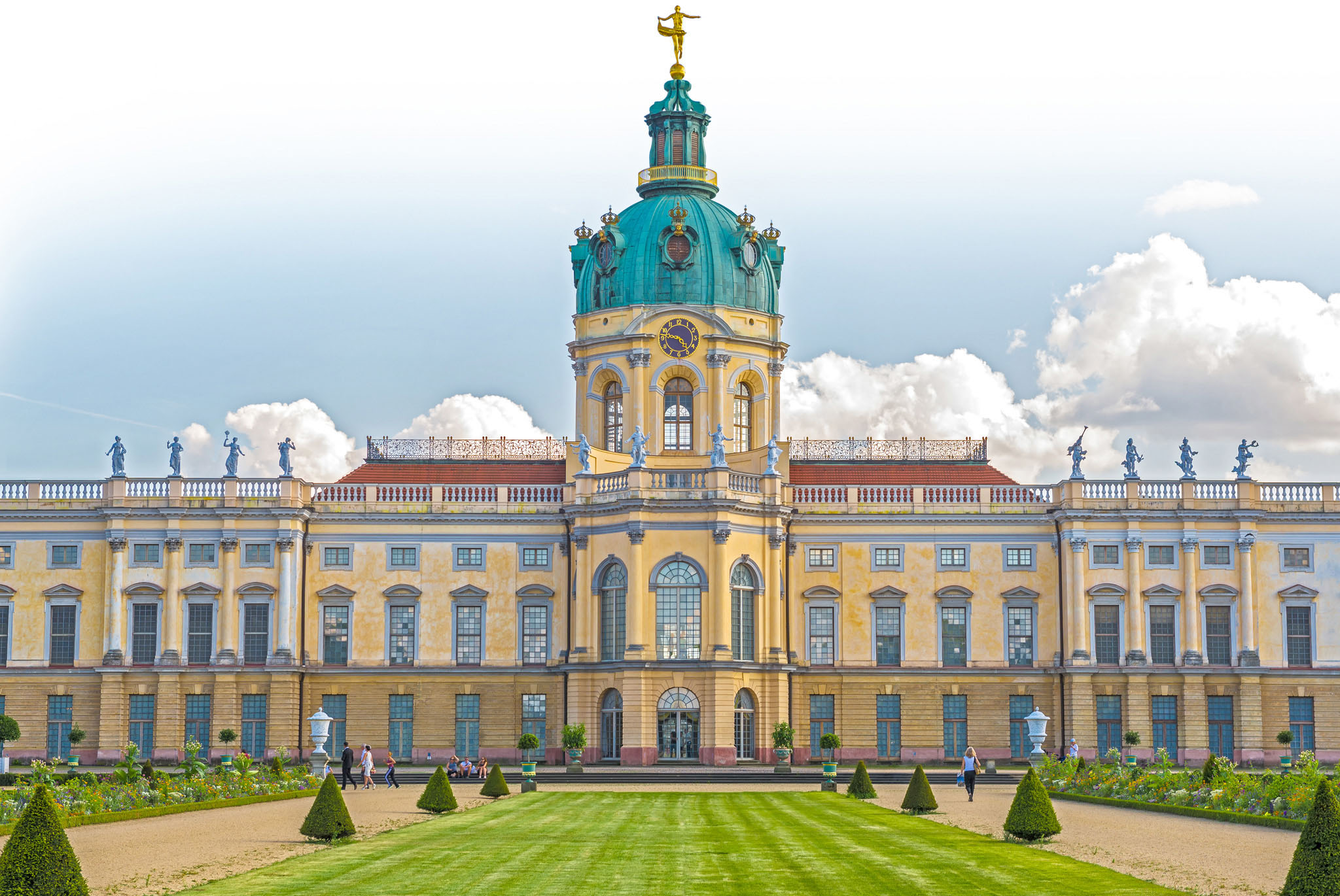
SCHLOSS CHARLOTTENBURG
The construction of Schloss Charlottenburg, designed as a summer residence for Sophie Charlotte, wife of the Elector Friedrich III, began in 1695. The Orangerie was extended and a cupola was added by Johann Friedrich Eosander between 1701 and 1713. Subsequent extensions were undertaken by Frederick the Great, who added the Neuer Flügel between 1740 and 1746.

Map of Schloss Charlottenburg
NEED TO KNOW
![]() Spandauer Damm • (030) 32 09 10 • Adm • www.spsg.de
Spandauer Damm • (030) 32 09 10 • Adm • www.spsg.de
![]() Altes Schloss: open Apr–Oct: 10am–6pm Tue–Sun (Nov–Mar: until 5pm)
Altes Schloss: open Apr–Oct: 10am–6pm Tue–Sun (Nov–Mar: until 5pm)
![]() Neuer Flügel: open Apr–Oct: 10am–6pm Wed–Mon (Nov–Mar: until 5pm)
Neuer Flügel: open Apr–Oct: 10am–6pm Wed–Mon (Nov–Mar: until 5pm)
![]() Belvedere: open Apr–Oct: 10am–6pm Tue–Sun
Belvedere: open Apr–Oct: 10am–6pm Tue–Sun
![]() Neuer Pavillon: open Jan–Mar: 10am–5pm Tue–Sun (Apr–Oct: until 6pm; Nov–Dec: noon–4pm Tue–Sun)
Neuer Pavillon: open Jan–Mar: 10am–5pm Tue–Sun (Apr–Oct: until 6pm; Nov–Dec: noon–4pm Tue–Sun)
![]() Mausoleum: open Apr–Oct: 10am–6pm Tue–Sun
Mausoleum: open Apr–Oct: 10am–6pm Tue–Sun
![]() Museum Berggruen: Schlossstr. 1; open 10am–6pm Tue–Sun; www.smb.museum
Museum Berggruen: Schlossstr. 1; open 10am–6pm Tue–Sun; www.smb.museum
- The Orangery Café has an attractive garden.
- Try a romantic midweek evening stroll to avoid the crowds (park: 6am–dusk).
1. Altes Schloss
The Baroque tower of the oldest part of the palace (dating to 1695) by Johann Arnold Nering is crowned by Richard Scheibe’s golden statue of Fortuna.

Altes Schloss
2. Porzellankabinett
This small, exquisite mirrored gallery has been faithfully restored to its original glory. Among the exhibits on display are valuable porcelain items from China and Japan.

Porzellankabinett
3. Schlosskapelle
The luxurious splendor of the palace chapel recalls the once magnificent interior design of the palace, before it was destroyed in World War II. However, apart from the original altar, the entire chapel—including the king’s box—is a costly reconstruction.
4. Monument to the Great Elector
The equestrian statue of the Great Elector Friedrich Wilhelm is thought to be one of his most dignified portraits. Made by Schlüter in 1696–1703, it stood on the Rathausbrücke originally, near the destroyed Stadtschloss.

Monument to the Great Elector
5. Neuer Flügel
Built between 1740 and 1747 by Georg W von Knobelsdorff, the new wing contains Frederick the Great’s private quarters, as well as a large collection of 18th-century French paintings.
6. Museum Berggruen
Situated in the Western Stüler Building opposite the Charlottenburg palace, this modern art gallery houses the permanent exhibition “Picasso and his Time,” featuring more than 100 works that span the artist’s career. Other highlights of the collection include works by Matisse, Klee, and Giacometti.
7. Schlosspark
The palace has a lovely Baroque garden, beyond which lies a vast park, redesigned by Peter Joseph Lenné in 1818–1828 in the English style with rivers, artificial lakes, and small follies.
8. Belvedere
Friedrich Wilhelm II liked to escape to the romantic Belvedere, a summer residence built in 1788 by Carl Gotthard Langhans, which served as a tea pavilion. Today it houses a collection of precious Berlin porcelain objects.

Belvedere
9. Neuer Pavillon
This Italianate villa, designed by Schinkel for Friedrich Wilhelm III in 1825, was inspired by the Villa Reale del Chiatamone in Naples and clearly shows the Hohenzollerns’ love of the Italian style.
10. Mausoleum
Slightly hidden, this Neo-Classical building by Schinkel is the final resting place of many of the Hohenzollerns.

Mausoleum
